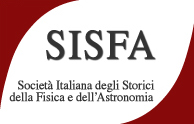Speaker
Description
Galileo's experiments are fascinating examples of how the scientific method works. Despite this, some scientists and historians asserts that Galileo did not make experiments. During the school year 2022-23 in a III Liceo class, talking about classical physics and Galileo, I proposed an analysis of a fundamental Galileo experiment on parabolic motion re-working in a modern key through the use of Arduino. In 1607 Galileo talks about motion with a manuscript (Folio 116v) in which he reports the experimental results whose interpretation is very important: Galileo assumes that velocity is a continuously variable quantity and is proportional to time and asserts that the velocities of bodies, falling from a certain height, are in the same ratio as the square roots of the distances. This result is fundamental for classical physics. The experimental device used by Galileo, and reconstructed with Arduino by a group of students, was a plane 30° inclined placed at a height of 828 points (77.7 cm) respect to the reference. This height allows to have, for a fall on the inclined plane from 300 points height, a range of 800 points. The attempt results of some launches are marked in the manuscript both by a calculated value ("doveria") and by a measured value, evidence that the experiment was carried out by Galileo. The study of this original source has allowed the students to relive a key moment of science history and the birth of experimental method through Galileo works, impossible to exclude from any high school path.

